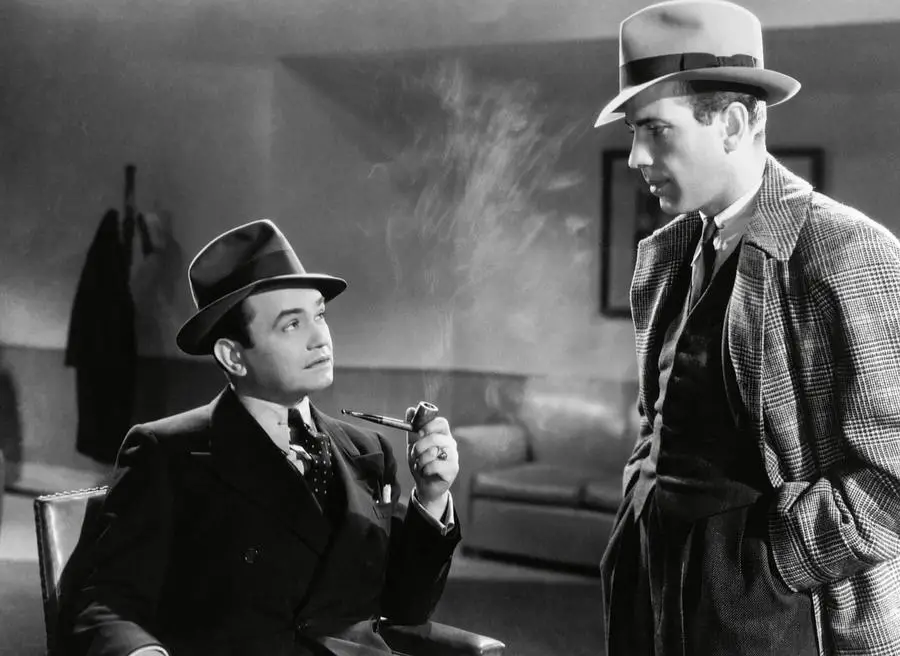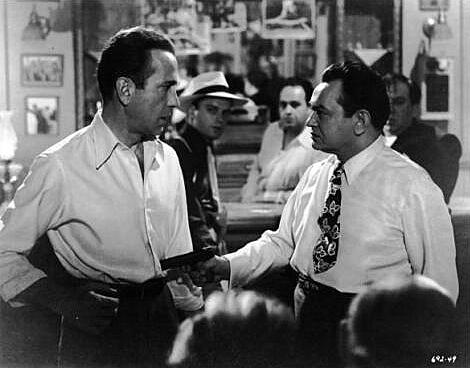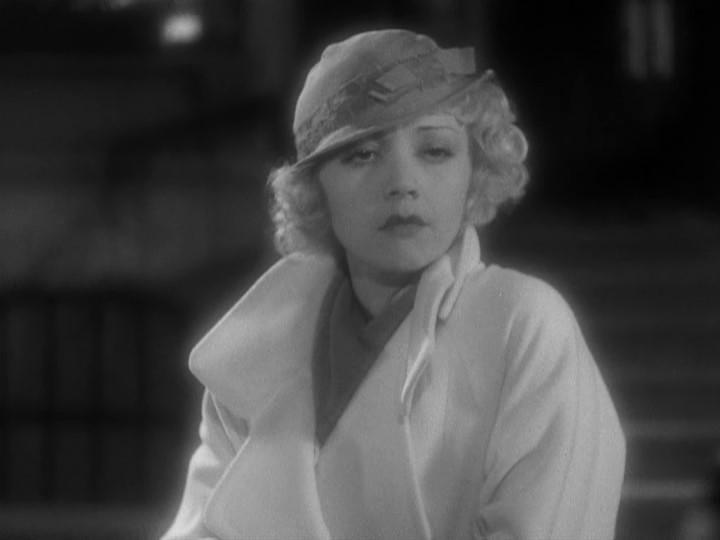Legends of the Silver Screen: Interesting Facts About Humphrey Bogart and Edward G. Robinson
Humphrey Bogart and Edward G. Robinson are two of the most iconic figures in classic Hollywood cinema. Known for their tough-guy personas and unforgettable performances, both actors left an indelible mark on the film industry. From playing gangsters to heroes, Bogart and Robinson captivated audiences with their unique styles and powerful screen presence. Here are some fascinating facts about these two legendary actors.
1. Humphrey Bogart: The Quintessential Film Noir Icon
- Late Bloomer to Stardom: Humphrey Bogart didn’t achieve major stardom until his 40s, which is relatively late in Hollywood. His breakthrough role came in 1941 with The Maltese Falcon, where he played the iconic private detective, Sam Spade. This role set the stage for his status as a film noir legend.
- A Passion for Sailing: Outside of acting, Bogart had a deep love for sailing. He owned a yacht named the Santana and spent much of his free time on the water. His love for sailing was so well-known that his ashes were scattered in the Pacific Ocean after his death.
- The Birth of “Bogie”: The nickname “Bogie” became synonymous with Humphrey Bogart, but it was more than just a moniker—it represented the tough, yet vulnerable, characters he portrayed on screen. His ability to combine grit with a sense of melancholy made him one of the most beloved actors of his time.
2. Edward G. Robinson: The Unforgettable Gangster
- Breaking the Mold: Edward G. Robinson is best known for his role as Rico in Little Caesar (1931), which defined the gangster film genre. Despite his smaller stature and intellectual appearance, Robinson brought an intensity to his roles that made him a standout figure in Hollywood.
- Art Collector Extraordinaire: Robinson had a passion for fine art and became one of Hollywood’s most respected art collectors. His collection included works by artists like Van Gogh, Renoir, and Picasso. Even during the height of his career, he was known to spend more time at art auctions than on film sets.
- A Man of Principle: During the McCarthy era, Robinson was wrongly accused of being a communist sympathizer. Although he was eventually cleared, the accusations impacted his career. Despite this, he remained steadfast in his beliefs and continued to work in the industry, proving his resilience both on and off the screen.
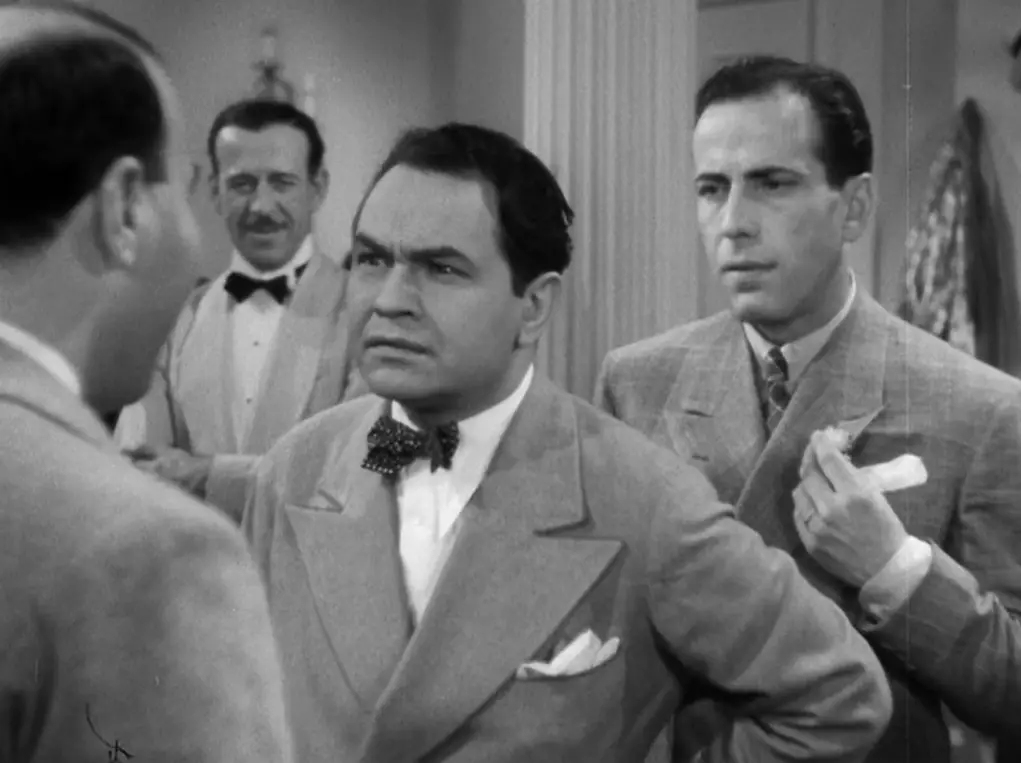
3. On-Screen Collaborations: A Powerful Duo
- Key Largo (1948): One of the most memorable collaborations between Bogart and Robinson was in Key Largo. Directed by John Huston, the film showcases their contrasting styles, with Bogart playing a weary WWII veteran and Robinson as a ruthless gangster. Their on-screen tension and chemistry make this film a classic example of post-war American cinema.
- Brotherhood and Rivalry: While they often played characters on opposite sides of the law, Bogart and Robinson shared a mutual respect for each other as actors. They were both known for their professionalism and dedication to their craft, which translated into powerful performances when they shared the screen.
4. Humphrey Bogart’s Legacy of Iconic Roles
- Rick Blaine in Casablanca (1942): Perhaps Bogart’s most iconic role was as Rick Blaine in Casablanca. The film remains one of the greatest love stories in cinema history, and Bogart’s portrayal of the world-weary, cynical yet romantic bar owner is unforgettable. The line, “Here’s looking at you, kid,” has become one of the most quoted in film history.
- Beyond Noir: While Bogart is often associated with film noir, his versatility as an actor allowed him to excel in various genres. From adventure films like The African Queen (1951), which earned him an Academy Award, to thrillers like The Treasure of the Sierra Madre (1948), Bogart’s ability to bring depth to every role made him a true Hollywood legend.
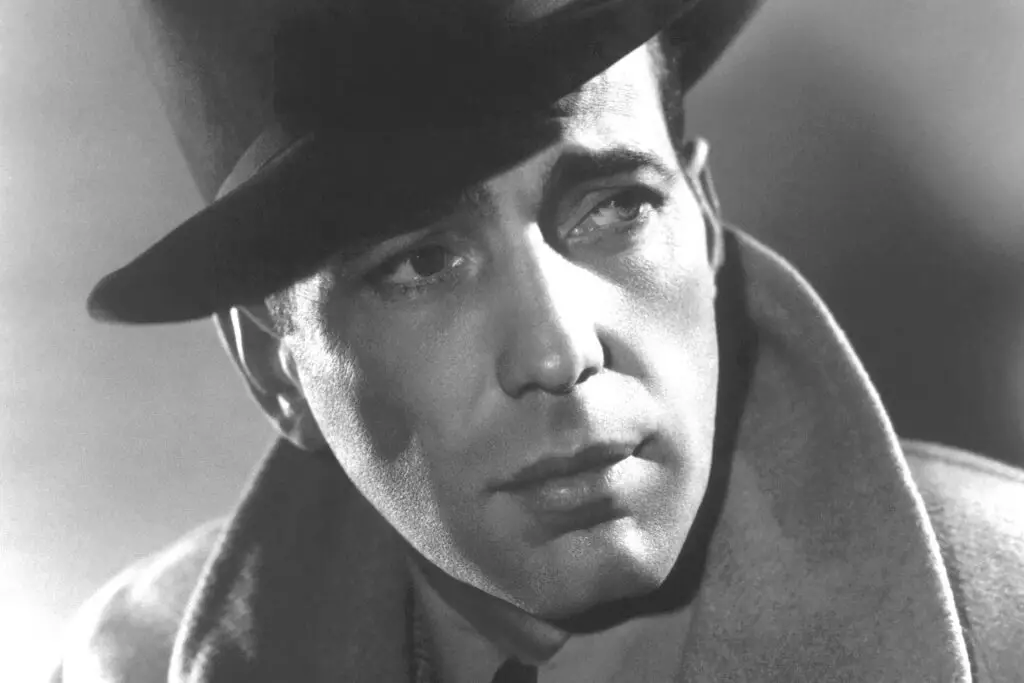
5. Edward G. Robinson’s Diverse Career
- The Intellectual Actor: Edward G. Robinson was not just a gangster on screen; he was a highly educated man who could speak several languages and was an avid reader. His intelligence and eloquence often shone through in his performances, allowing him to portray a wide range of characters, from ruthless criminals to thoughtful intellectuals.
- A Return to Broadway: After making a name for himself in Hollywood, Robinson returned to his theatrical roots on Broadway. His performance in Middle of the Night in 1956 showcased his range and reminded audiences of his formidable talent on the stage, as well as the screen.
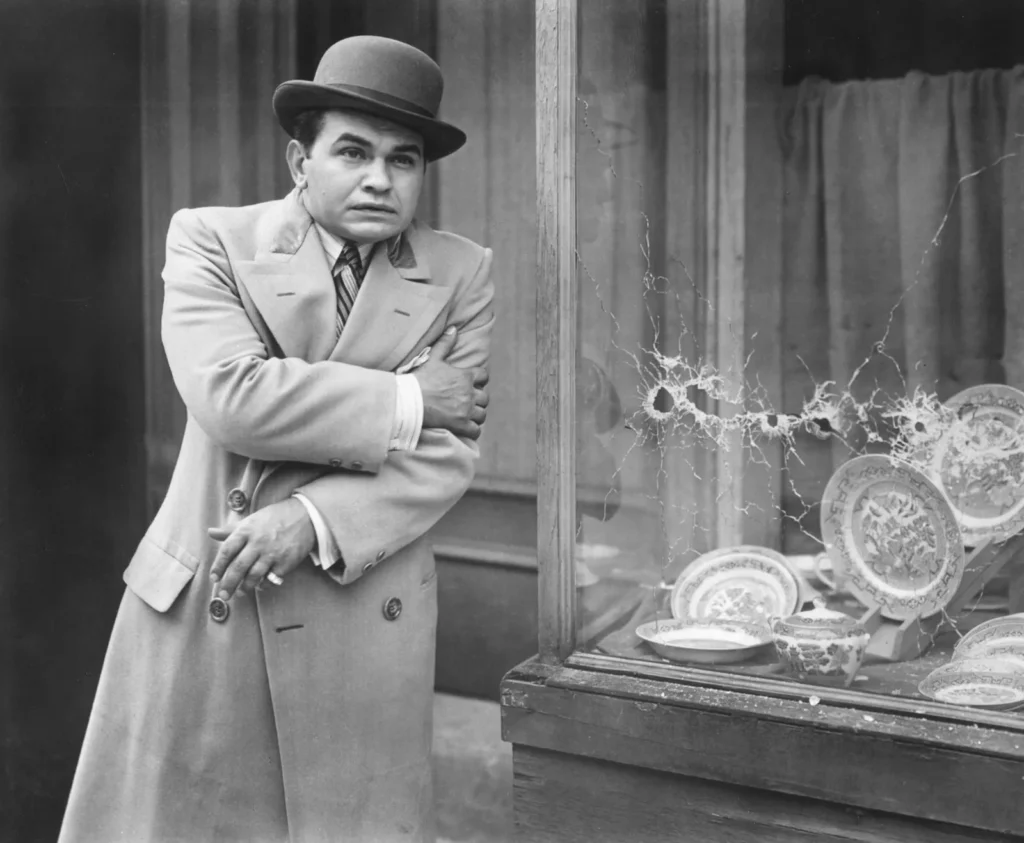
6. Enduring Influence on Cinema
- The Bogart Mythos: Humphrey Bogart’s persona has become so ingrained in popular culture that he remains a symbol of the tough, morally complex hero. His influence can be seen in countless films, television shows, and even in the fashion world, where his trench coat and fedora combination has become iconic.
- Robinson’s Cultural Impact: Edward G. Robinson’s portrayal of gangsters influenced not only Hollywood but also the way gangsters were perceived in American culture. His distinctive voice, memorable lines, and powerful presence have been referenced and parodied in various media, cementing his legacy as one of the original “tough guys” of cinema.
Conclusion: The Timeless Appeal of Bogart and Robinson
Humphrey Bogart and Edward G. Robinson are more than just actors; they are legends who helped shape the Golden Age of Hollywood. Their contributions to cinema continue to be celebrated, and their performances remain as compelling today as they were decades ago. Whether through Bogart’s brooding, charismatic heroes or Robinson’s intense, unforgettable villains, these two stars have left an indelible mark on film history, ensuring their place among the greatest actors of all time.
